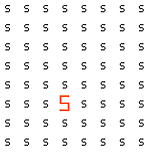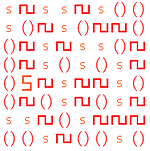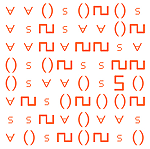Fun with Seek and Find
I love puzzles of all sorts. Word puzzles. Number puzzles. Mazes. Codes. Brain teasers.
Not surprisingly, I passed on my willingness to tinker with a pencil and paper in an attempt to solve this or that challenge to my kids. Years ago, we spent countless hours poring over the pages of I Spy, Where's Waldo, and various spin-offs on the "can you find it hidden on this page" concept. In addition to the regular I Spy titles, the Can You See What I See? books by Walter Wick (one of the best-known photographers for the I Spy series) are wonderful and beautifully photographed.
I Spy-type books have recently made a huge comeback in my house, and the reality is that some are harder than others. We love Pokemon, but with kids ages 6 and 9, the seek-and-find Pokemon series ended up being too easy. It was fun to find our favorite characters, but it didn't take long to spot all the targets and whiz right on through an entire book (and then bemoan the cost of a hardback book that is so quickly "done"). Where's Waldo, by comparison, tends to be much more difficult and time-consuming.
What makes one seek-and-find harder than the next?
You probably can make some educated guesses about what's going on and how seek-and-finds can be configured for a variety of age ranges and difficulty levels. Scientifically speaking, much of the "challenge factor" can be boiled down to the degree of interference presented in the picture or photograph.
Brain on a Quest
As you look for the target item, you are doing a visual search, sorting and sifting through and weeding out the things that are "not right" as you seek the exact match for your target. How many things are "not right," and what they look like, what color they are, and how close they appear to each other and to the target all contribute to the difficulty of a seek-and-find.
For example, in the following three illustrations, the "orange upright 5" is quite easy to spot in the first image. It's a bit more difficult in the second image. In the third image, the number of distracters has increased and the distracters are the same color as the target. Both of these factors add to the challenge involved in quickly locating the target.



A Range of Variables
Which feature of the distracter is more important? Is it the color? Or the shape (and the similarity to the shape of the target)? Is it the number of distracters?
Curious?
If you love a good puzzle, you might enjoy putting these questions to the test with the Science Buddies The Brains Behind 'Where's Waldo?' project idea. Using an online application, you can set up your own basic "seek-and-find" pages and put test them with a set of volunteers.
Once you understand the science behind what is going on, the sky's the limit in terms of what real-world simulations you might set up and photograph. You might just have your own line of seek-and-find titles lurking inside you!
Categories:
You Might Also Enjoy These Related Posts:
- Plastics and Earth Day - Science Projects
- Arduino Science Projects and Physical Computing
- 10+ Robotics Projects with the BlueBot Kit
- 5 STEM Activities with Marshmallow Peeps
- March Madness Basketball Science Projects: Sports Science Experiments
- Women in STEM! More than 60 Scientists and Engineers for Women's History Month
- Explore Artificial Intelligence and Machine Learning with Student AI Projects
- 10 Reasons to Do the Rubber Band Car Engineering Challenge









